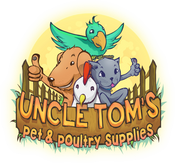Goat Pellets are a nutritious food formulated to be fed to growing and lactating goats and is also an ideal diet for maintenance.
It is nutritionally balanced for essential nutrients such as protein, energy, vitamins and minerals.
Feeding Recommendations
The feeding rate of Goat Pellets will vary depending on a number of factors such as body weight and condition, pregnancy, lactation (level of milk production), activity and quality of the roughage being fed.
Generally total daily feed consumption, including roughage, will be between 2% and 3.5% of body weight.
Consumption of Goat Pellets will generally be between 10% and 75% of the total feed consumed.
Introduce Goat Pellets gradually and avoid sudden changes to diet as digestive problems may occur. If digestive problems occur reduce the amount of pellets being fed and increase roughage consumption until normal digestive activity resumes.
Multi Purpose
Goat Pellets are a well-balanced nutritious food that can be fed to other stock such as sheep, cattle, alpaca and deer. Feeding recommendations are similar to those above.
Roughage and clean, fresh water must be available at all times.
Ingredients
Goat Pellets are formulated from a selection of the following ingredients:Barley, wheat, triticale, oats, peas, lupins, lentils, beans, soyabean, canola, lucerne, almond, sunflower and products derived from these ingredients. Vegetable oil, limestone, di-calcium phosphate, salt, acid buf, bentonite, ammonium chloride, magnesium sulphate, magnesium oxide and antioxidants.
Vitamins: A, D3, E.
Minerals: Calcium, phosphorus, sodium, chloride, cobalt, copper, iodine, iron, manganese, sulphur, selenium and zinc.
Analysis
As fed DM @ 89%
Protein (min) 15.0% 16.9%
Fat (min) 3.2% 3.6%
Fibre (max) 12.0% 13.5%
Salt (max added) 1.1% 1.2%
Acid Buf (rumen buffer)1.0% 1.1%
It is nutritionally balanced for essential nutrients such as protein, energy, vitamins and minerals.
Feeding Recommendations
The feeding rate of Goat Pellets will vary depending on a number of factors such as body weight and condition, pregnancy, lactation (level of milk production), activity and quality of the roughage being fed.
Generally total daily feed consumption, including roughage, will be between 2% and 3.5% of body weight.
Consumption of Goat Pellets will generally be between 10% and 75% of the total feed consumed.
Introduce Goat Pellets gradually and avoid sudden changes to diet as digestive problems may occur. If digestive problems occur reduce the amount of pellets being fed and increase roughage consumption until normal digestive activity resumes.
Multi Purpose
Goat Pellets are a well-balanced nutritious food that can be fed to other stock such as sheep, cattle, alpaca and deer. Feeding recommendations are similar to those above.
Roughage and clean, fresh water must be available at all times.
Ingredients
Goat Pellets are formulated from a selection of the following ingredients:Barley, wheat, triticale, oats, peas, lupins, lentils, beans, soyabean, canola, lucerne, almond, sunflower and products derived from these ingredients. Vegetable oil, limestone, di-calcium phosphate, salt, acid buf, bentonite, ammonium chloride, magnesium sulphate, magnesium oxide and antioxidants.
Vitamins: A, D3, E.
Minerals: Calcium, phosphorus, sodium, chloride, cobalt, copper, iodine, iron, manganese, sulphur, selenium and zinc.
Analysis
As fed DM @ 89%
Protein (min) 15.0% 16.9%
Fat (min) 3.2% 3.6%
Fibre (max) 12.0% 13.5%
Salt (max added) 1.1% 1.2%
Acid Buf (rumen buffer)1.0% 1.1%

